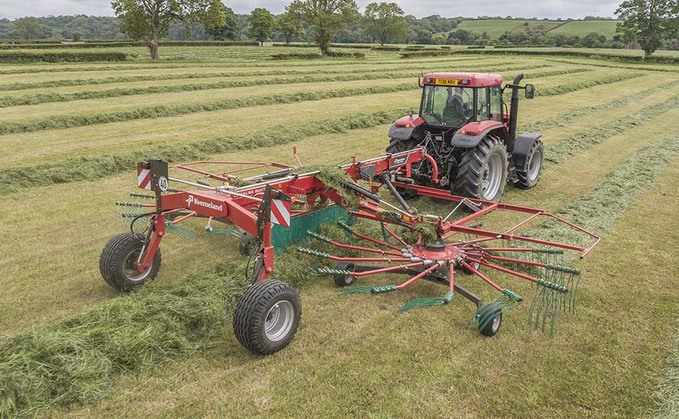
Complementing the Kverneland triple mowers as previously reviewed, we also got our hands on one of the firm's twin rotor rakes for review. James Rickard reports. The ability to have a wide working width...

Complementing the Kverneland triple mowers as previously reviewed, we also got our hands on one of the firm's twin rotor rakes for review. James Rickard reports. The ability to have a wide working width...